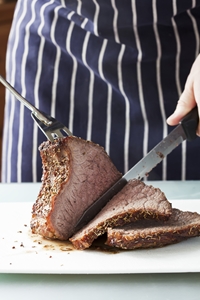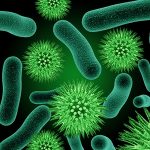If you work for an organisation that is responsible for the production of food, it’s important that you take the time to familiarise yourself with the Australian Food Safety Standards.
Of particular importance is Standard 3.2.2 of the Australia New Zealand Food Standards Code, which mandates the specific requirements which food businesses must follow in order to ensure all food they produce is safe for human consumption.
Here is a brief overview of some of the key points in this Standard which your business must be aware of.
General requirements
Division 2 of Standard 3.2.2 dictates that food businesses must ensure any individuals handling food or supervising food production have the proper education and knowledge regarding food safety and hygiene.
It is vitally important that any staff preparing food on your premise understand their obligations and the rules surrounding food safety, as well as how to use important food safety tools such as thermometers and cleaning and sanitisation devices.
Food handling controls
Under Division 3 of the Standard, all Australian food businesses must “take all practicable measures to ensure it only accepts food that is protected from the likelihood of contamination”.
This means taking practicable steps to ensure that any potentially hazardous food bought onto the premises for the purpose of consumption is being stored at a temperature either below 5° Celsius or above 60° Celsius.
Food must also be stored in a manner that ensures it is protected from contamination and, if potentially hazardous, kept at a suitable temperature to limit risk that it will become dangerous.
Health and hygiene requirements
Division 4 of the Standard refers to the health and wellbeing of people who are actually handling food. This code requires that any food handler potentially carrying a foodborne disease disclose this to a supervisor at the first possible instance.
Food handlers must also take “all practicable measures” to ensure their body and clothing does not contaminate food, or contaminate any surface which may be used to prepare food, or come into contact with food prior to consumption.
Cleanliness and maintenance
The Australian Food Safety Standards outline clear requirements when it comes to achieving a standard of cleanliness and preventing the accumulation of garbage, food waste, dirt and grease.
Furthermore, food businesses must ensure that their premises and food transportation vehicles are well maintained, in “a good state of repair” and are in safe working order. No chipped or broken eating utensils are permitted to be used by food businesses.
Temperature measuring
Division 6 (Miscellaneous) of Standard 3.2.2 requires all food premises at which potentially hazardous food is handled to provide a temperature measuring device that is able to “accurately measure the temperature of potentially hazardous food to /- 1º C”.
There is a wide range of food temperature measuring devices available – including digital thermometers – and selecting the right model for your business will require careful consideration. However, regardless of your final decision, it is critical that one is on hand at all times during food preparation, in order to ensure you are meeting your legal and ethical obligations.
Animals and pests
Division 6 also outlines the obligations businesses have regarding the presence of live animals and pests on their premises.
Food businesses must take all practicable measures that food premises are free of pests and rodents, which could potentially pose a contamination risk to food. Any vehicles used to transport food must also be pest-free.
It’s important to note that this guide is far from comprehensive, and anybody looking for further clarification of the standards may want to visit the Australian government ComLaw website, where they are available in full.









 Reduce cooking oil costs while ensuring quality
Reduce cooking oil costs while ensuring quality Expert knowledge on CO2 monitoring
Expert knowledge on CO2 monitoring Refrigeration knowledge - in 3 modules
Refrigeration knowledge - in 3 modules



